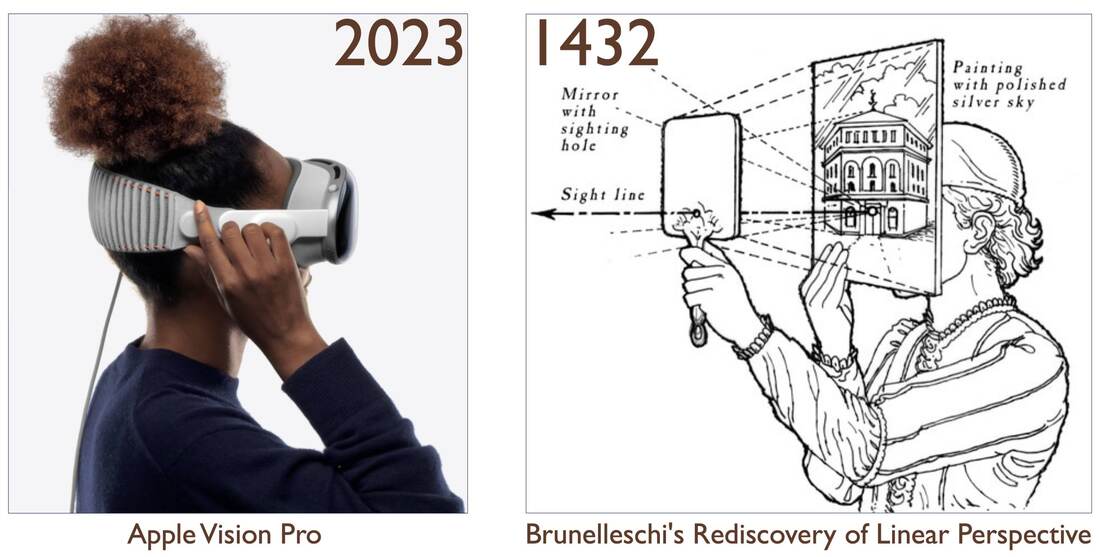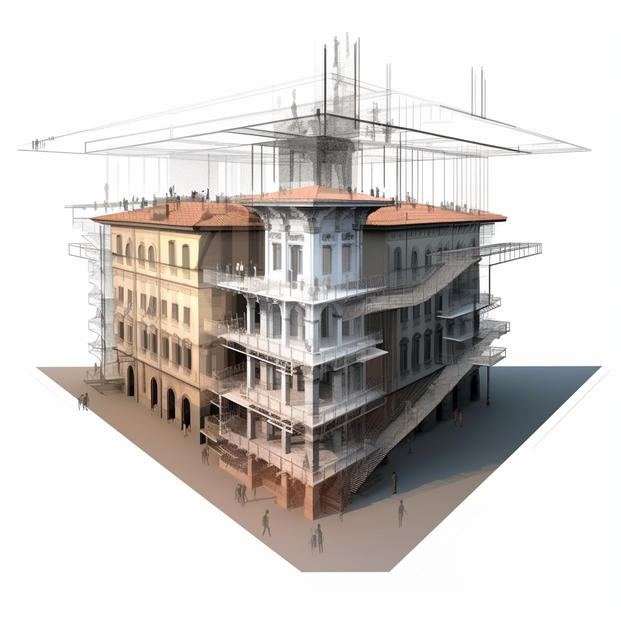|
Over the centuries, architecture has been an interplay of artistry and technology. From Brunelleschi's rediscovery of linear perspective that revolutionized our understanding of space to the advent of CAD and BIM, we've seen our field morph and adapt with technology. Today, our challenge lies in bridging Architectural Intelligence with Artificial Intelligence (AI) to create informed, resilient environments that respond to evolving human and ecological needs. Our cities and buildings are becoming increasingly complex, and AI can be a mechanism to help guide and navigate through the complexity. Yet, as with any technological innovation, apprehensions abound. Some fear the 'death of drawing,' a concern echoed by David Ross Scheer in his thought-provoking "The Death of Drawing: Architecture in the Age of Simulation." Others fear the more drastic 'death of architecture.' However, as Brunelleschi's discovery didn't result in the 'death' of 2D representation, the transition to dynamic simulations and AI doesn't signify the end of architecture but a transformative phase. Avoiding the feared 'death of architecture' isn't about resisting AI but understanding and proactively integrating it into our processes. AI is not a replacement for human architects but a tool that can augment our capabilities, freeing us from repetitive tasks to focus on design and innovation. AI can help us navigate the flood of data produced during building design, construction, and operation, leading to more informed and effective decisions. At the recently concluded AIA conference, A'23, in San Francisco, I observed a disappointing scarcity of sessions dedicated to AI's role in architecture. This shows a clear gap between the rapid advancement of technology and its adoption in our field. We must address this gap through continuous learning and proactive discussions. In this spirit, I presented in a webinar parallel to A'23, hosted by USC for the BIM BOP, titled "BIMStorm Ai: AIA, a Charrette for Architects and Machines." The session focused on exploring the collaboration between architects and AI, which needs more attention in our industry. In our journey through this era of rapid technological change, it's vital to recognize the double-edged nature of AI. While it has the potential to revolutionize our practice by enhancing our designs and contributing to the creation of enduring built environments, unregulated or uninformed use of AI could pose a threat not only to our profession but to humanity at large.
These fears are not unfounded. Voices from within the media and AI development circles have been raising valid concerns about the potential misuse of AI. We, as architects, must not overlook these warnings. AI is a powerful tool, and like all tools, its impact hinges on how it is wielded. In the architecture domain—encompassing buildings, cities, and infrastructure—it is our responsibility to integrate AI and guide its use positively and ethically. This task goes beyond merely supporting our practice and industry. It's about stewardship, about using our expertise to ensure that AI serves the public good and contributes to human-centered, sustainably built environments. Failure to proactively define the use of AI in architecture could result in a passive acceptance of a future defined by those outside our profession—a lot that might not align with our values or the needs of society. The future of architecture, and indeed of our cities and communities, relies on our willingness to engage with AI, understand its implications, and guide its deployment to ensure a harmonious, sustainable, and human-focused built environment. Let's regard this not as a burden but as an opportunity to shape a better future. I invite you to join in this journey to learn, innovate, and chart a course forward in tandem with technology. Together, we can ensure that AI is a constructive tool rather than a destructive force in architecture. As always, I welcome your thoughts, experiences, and participation in the ongoing BIMStorm AI. Kimon Onuma, FAIA |
BIMStorm
Thoughts on the "i" of BIM and more. Archives
January 2024
Categories |


 RSS Feed
RSS Feed